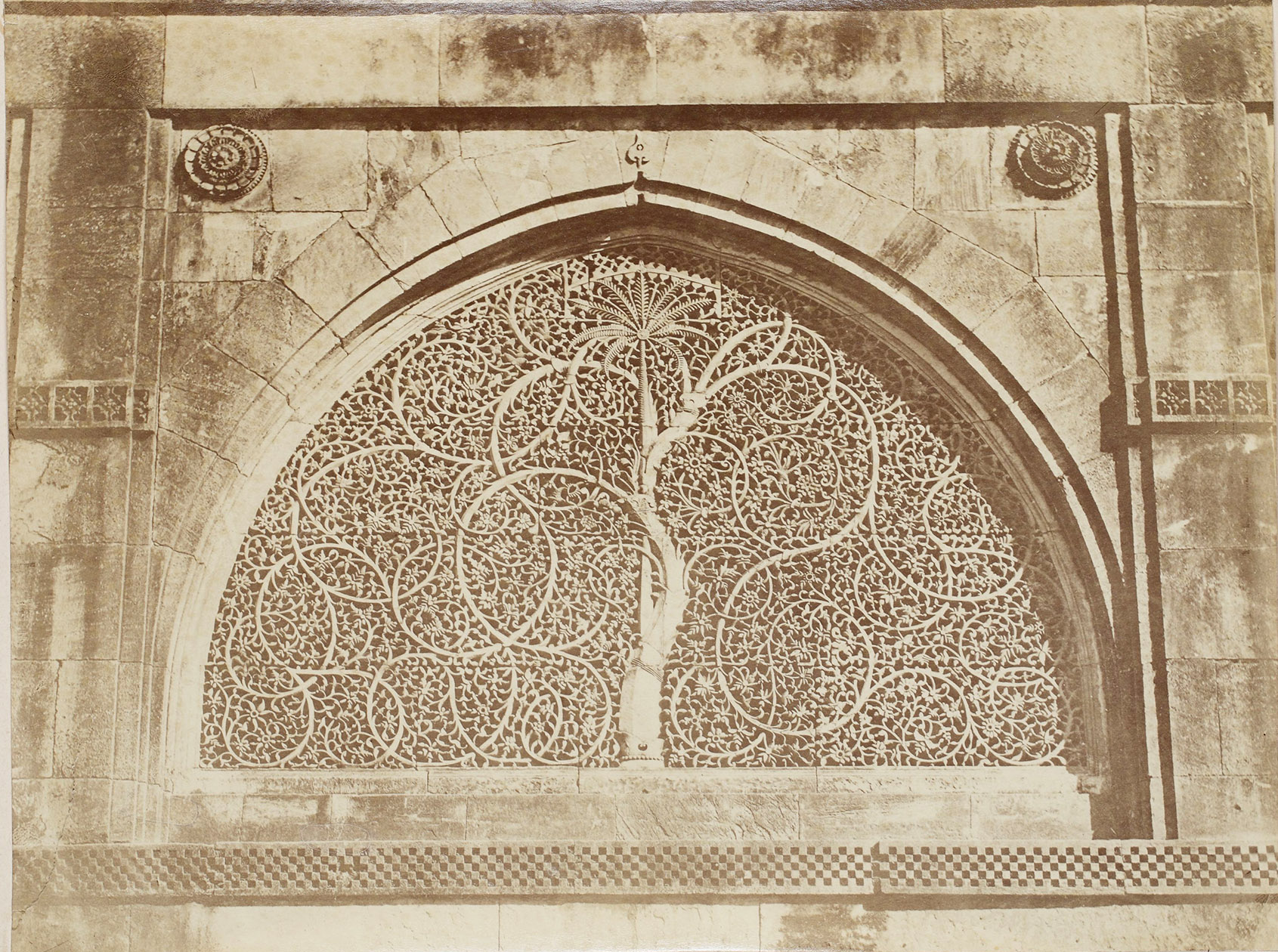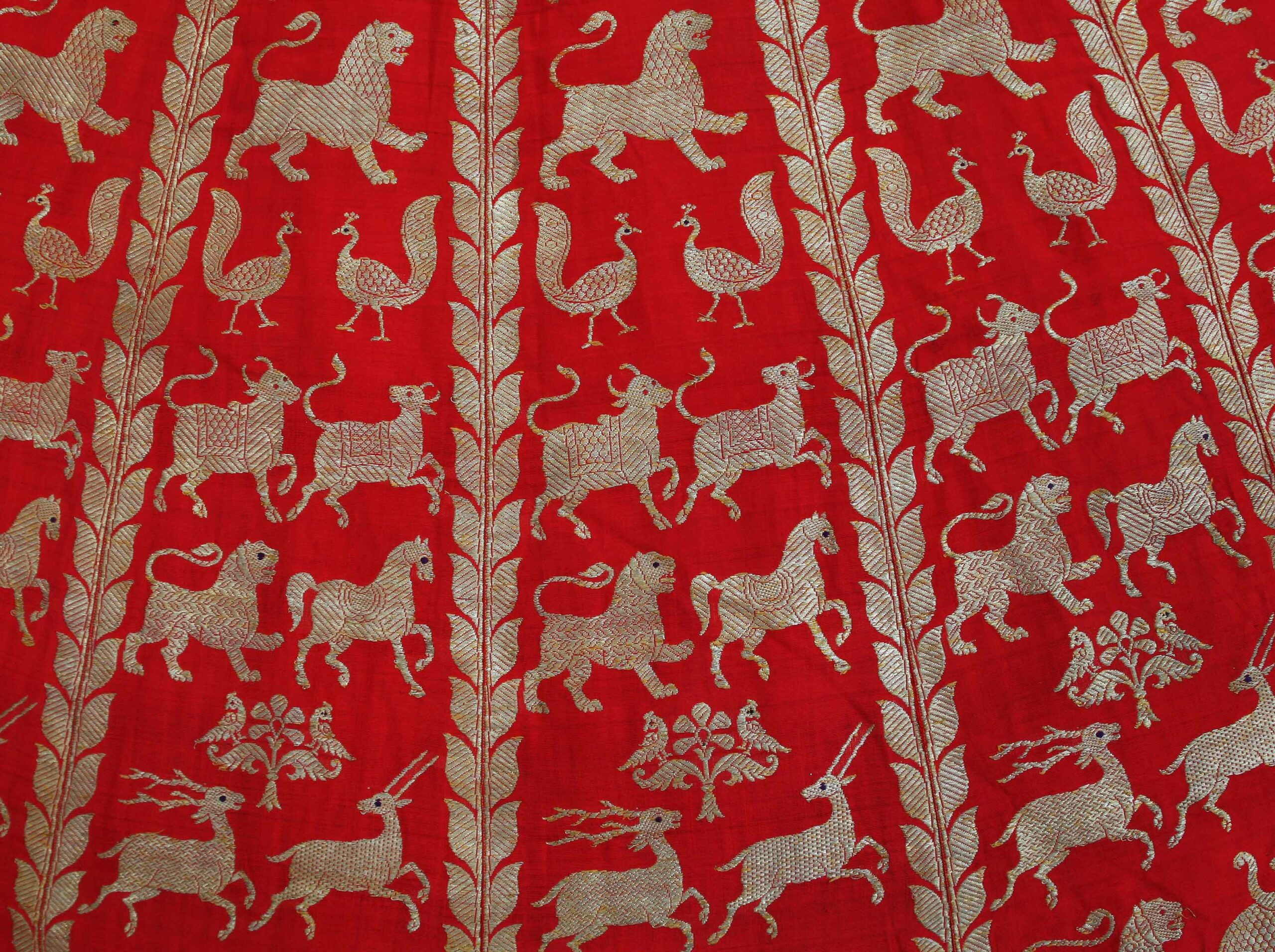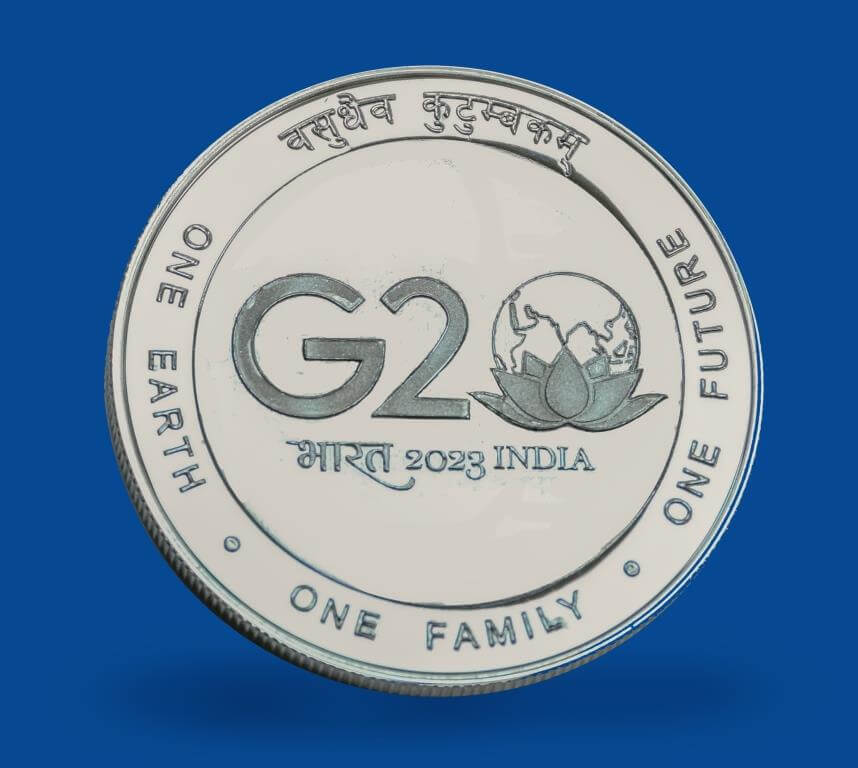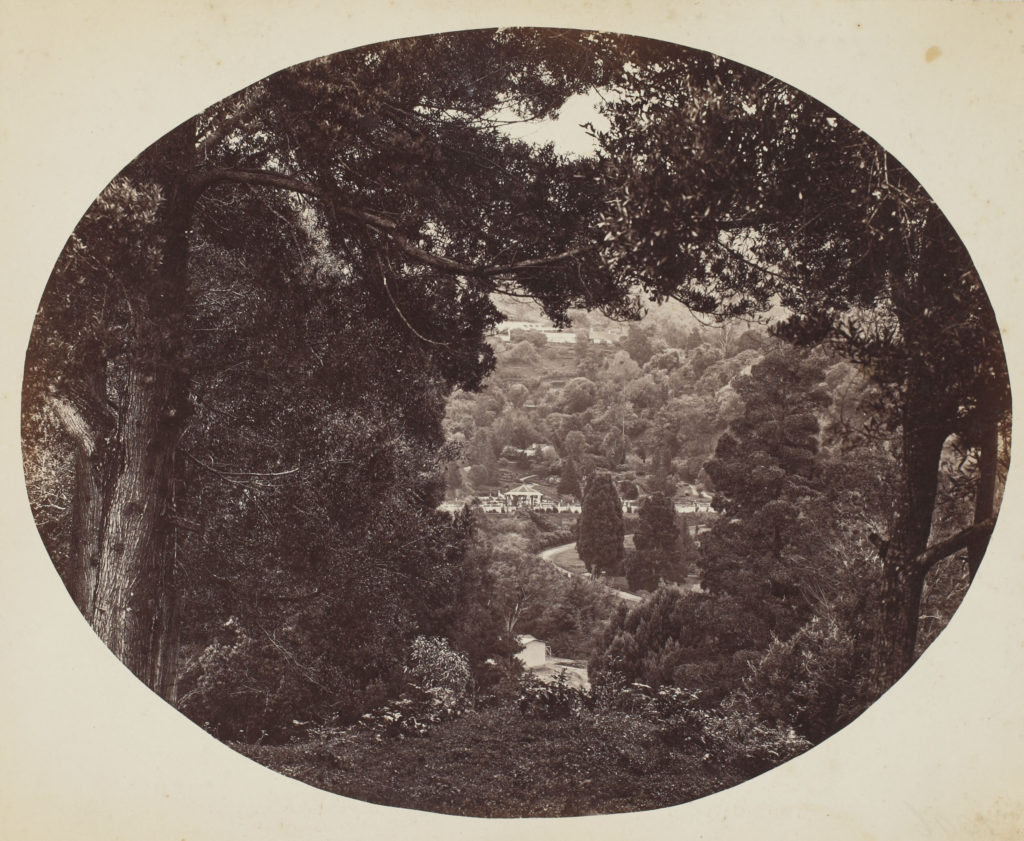
An early photograph of the Nilgiris by Edmond David Lyon © Sarmaya Arts Foundation
Today the internet has brought the world to our screen at a mere click of a mouse. Tomorrow perhaps virtual travel will be an even more immersive experience with fragrances and kinesthetic incorporated as well. It is tough for us today to imagine the enormous excitement in the late 19th century over what India was really like.
Artists and photographers were quick to work on this business opportunity by drawing or clicking images for sale in London. These were the days when the west was still respectful of Eastern traditions and long before Macaulay dismissed all eastern wisdom. We had relatively unknown artists, even the wives of serving officers, try their hand at creating images for England. Other more famous recorders were Edward Lear, the creator of limericks.
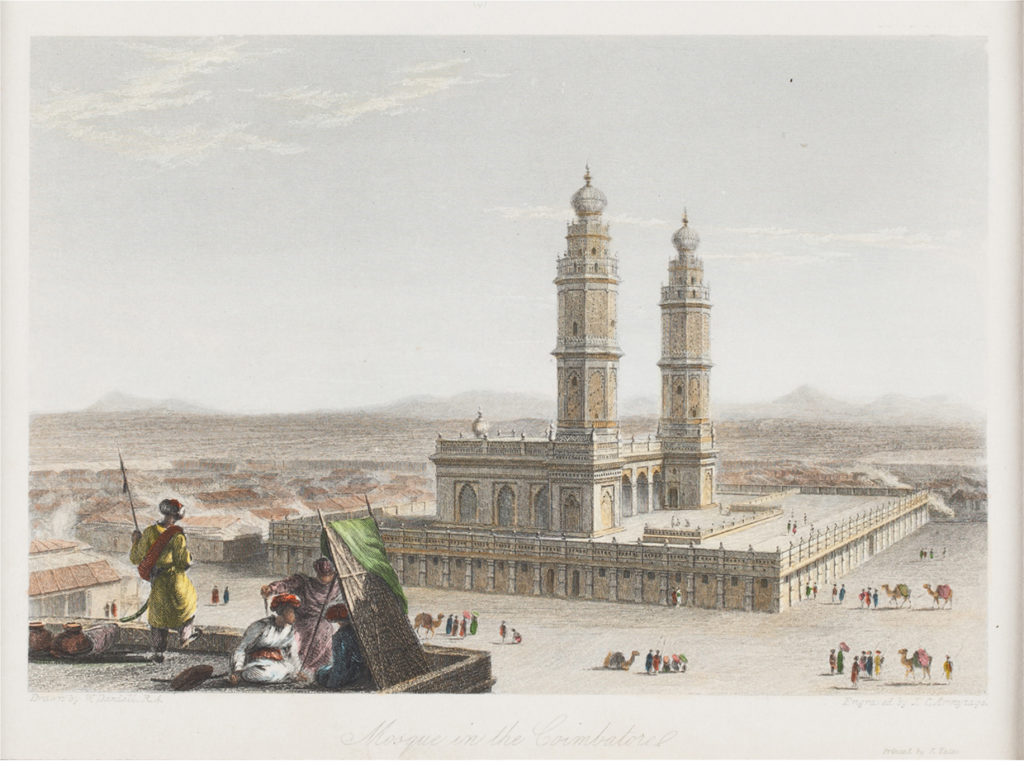
Mosque in Coimbatore, an engraving by J C Armytage based on the art of William Daniell © Sarmaya Arts Foundation
William and Thomas Daniel were the famous painters who did the first trail and their aquatints sold like hot cakes. By around 1855, Dr Alexander Hunter included photography as a subject in the Government School of Industrial Arts (currently the Government College of Arts, Chennai). The introduction of the subject created a lot of interest in other art colleges in India since it was just a few years after photography was invented. Madras became one of the first places to teach the course and the Photographic Society of Madras one of the first such societies in the world. Photography soon became a fashionable pastime across India and several photographers toured the important towns of India and recording their views in this new medium.
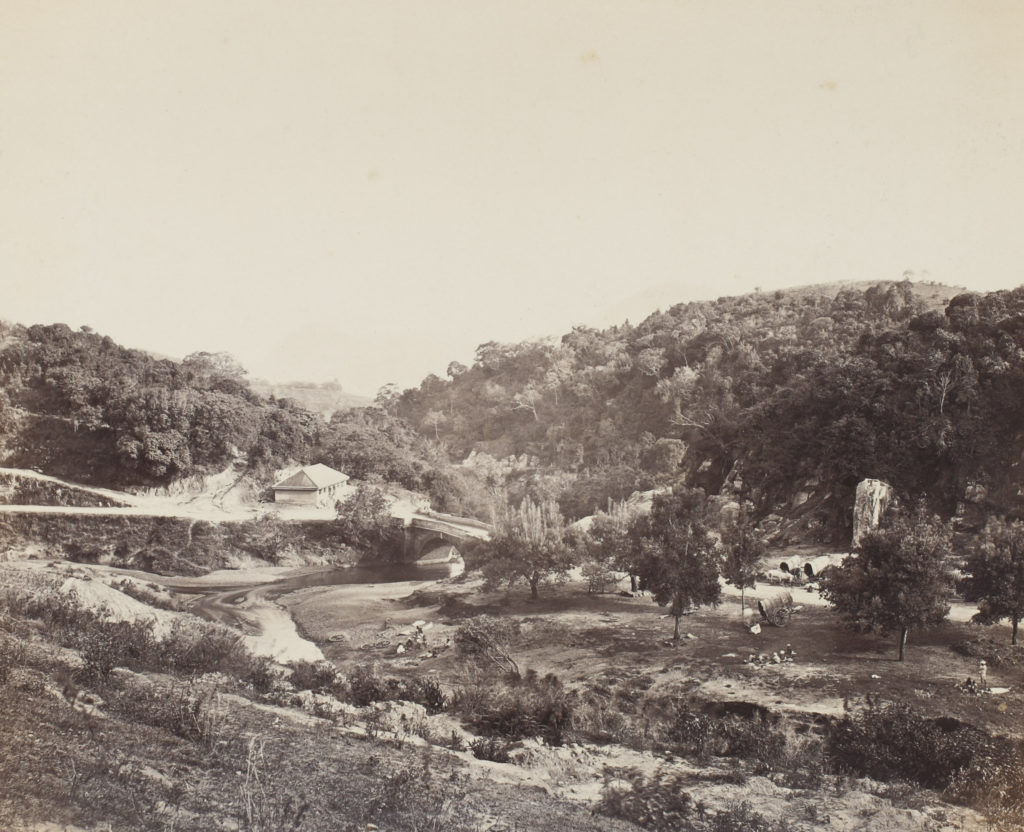
Photograph from an album on Nilgiris by Edmund David Lyon © Sarmaya Arts Foundation
Edmond Lyon whose photographs occur in this archive, was among the famous ones. His folios languish in the College of Arts so it is just as well that this collection is carefully maintained for us to see. Captain Edmund David Lyon (1825-1891), came to India in 1865 as a commercial photographer. Before this he had a stint in the army as a governor of the Dublin District prison among other things. He opened his studio in Ooty (Udhagamandalam). While in India, he was commissioned by the Governments of Madras and Bombay to photograph the presidencies. Lyon photographs of Thanjavur are mostly of the palace and the area immediately around it. Lyon left India in 1869, returning to Europe via Malta, where he was again commissioned to photograph architectural subjects for the colonial authorities. He later settled down in Malta.
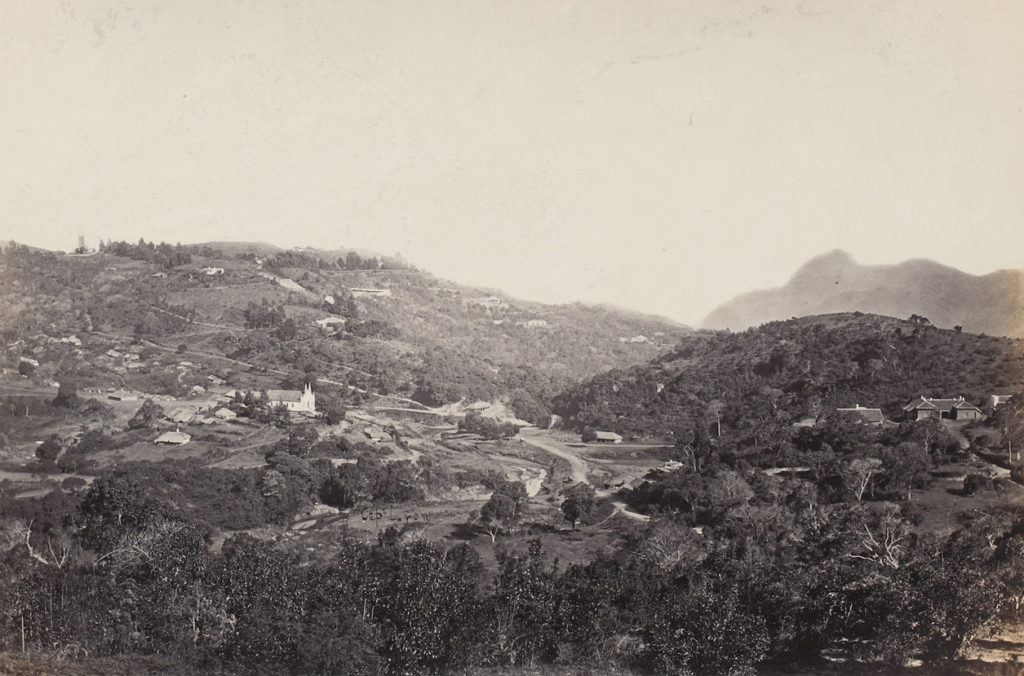
‘View of the Church in Nilgheries, Coonoor’ by Edmund David Lyon © Sarmaya Arts Foundation
As you look at the images, try to channel the sense of excitement these would have caused halfway across the world. Also, remember that each image would have taken a long time surely, at least an hour, to be imprinted. I Lyon’s own words, getting to the locations was not easy, either:
“Before leaving Madura, it will be well for the traveler to ponder seriously over the mode of travelling, he intends adopting. The remarks hitherto made, as already stated, apply only to the highroads, which, disgracefully bear as they are, still become beautiful by comparison with the cross-country ones which will now have to be traversed. No bungalow, either will now be found, and consequently the traveler must provide himself with tents, which had better be purchased in Madras and sent on before. It is hardly possible, without even greater discomfort than is actually bearable, to manage in that climate with one tent. Two therefore should be procured, one of which should always be kept in advance, and if there be no hurry, and riding be selected as the mode of travelling, with good servants accustomed to tent life, there is no hardship whatever to be encountered, on the contrary there is no pleasanter life than marching, as it is called with tents in the plain of India. It is the mode of travelling adopted by collectors of districts, who go with their wives and children into tents for the four winter months of every year while they make their tour of their respective districts.
“In the first place it will be found by experience almost impossible to persuade the native servants to start at the proper time, as especially if they are hindoo an hour or more will be wasted in “eating rice after everything else is packed and ready. Again, the bullocks are never found ready at the different stages. Another hour is often lost in enduring to find where they are located; and thus the sun will be up, and the great heat will have commenced before the resting place is reached, if long stages are attempted. There is one other commodity with which the traveler will do well to provide himself before undertaking such a journey, which is a firm determination to take philosophically the contretemps of every sort and kind which must inevitably happen daily, if not hourly, to try his temper, to say nothing of the carelessness, dilatoriness, utter disregard of time, and often cool impudence of his hindoo servants which it must be confessed are often sufficient to vex a saint, let alone an Englishmen, vegetating under the tropical sun of India.”
Pradeep Chakravarthy is an author, leadership consultant and Sarmaya Talks speaker—watch his talk here. Find out more about him at MysticalPalmyra.com
References:
Thanjavur: A Cultural History by Pradeep Chakravarthy, Niyogi Books 2010
Madras Musings: A Priceless Collection Of Old Photographs

